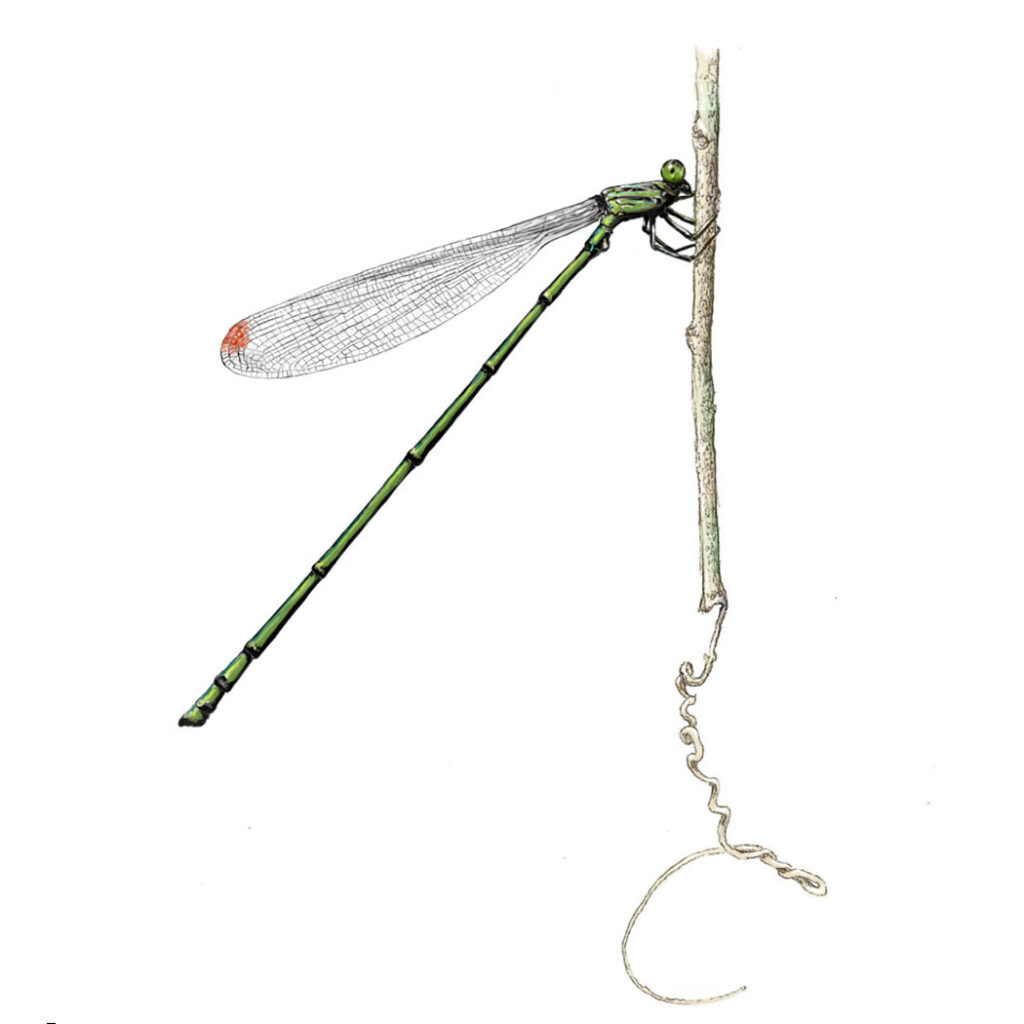Bromeliad Helicopter Damselfly

Your first sighting of one of these giant damselflies might leave you rubbing your eyes in disbelief. For starters, it is huge – the one in the drawing above had a body about 4” long. When it takes wing against a dark forest background, all you might see are the red wing spots, which gyrate in a circular pattern like helicopter blades – thus the name. There’s a nice video here, although it’s mostly in slow motion which doesn’t demonstrate the helicopter effect very well.
The Bromeliad part of the damselfly’s name refers to those huge spiky bromeliad plants perched high in the trees where the damselflies start out life in little pools of rainwater, called phytotelmata, collected at the bases of the leaves. They hatch from eggs in the phytotelmata and grow up as water insects called naiads, eating mosquito larvae, flies, other naiads, and tadpoles and frog eggs deposited by tree-dwelling frogs. After moulting into an adult damselfly, a Bromeliad Helicopter may live as long as seven months. More information can be found here.
The Bromeliad Helicopter is found in only three areas of Central America – in south-central Mexico, in Costa Rica, and in a tiny area right here in the foothills of the Maya Mountains.
One final really cool thing: the Bromeliad Helicopter feeds exclusively on web-building spiders, hovering nearly motionless next to a web, dashing in and grabbing the spider, then carrying it to a perch where it snips off the legs and eats the body. Sometimes it filches an insect freshly killed and wrapped by the spider and stored away for later.
The damselfly remembers locations where it has preyed on spiders before, and checks on those webs as it hunts in the rainforest, in case a new spider has appeared to use the empty web and become damselfly dinner.
One spider the damselfly does not grab and eat is the Golden Silk Orb Weaver (there is one shown in the gallery on this website). That big orb weaver strings up a complex barrier of web strands to discourage the hover-and-snatch technique of the Bromeliad Helicopter.
By the way, if you aren’t familiar with damselflies, you will likely assume this is a dragonfly when you see it. The difference between the two is that dragonflies perch with their wings outspread like an airplane, while damselflies fold their wings neatly over their backs, as in the drawing here. Also, damselflies generally have much floppier wingbeats.